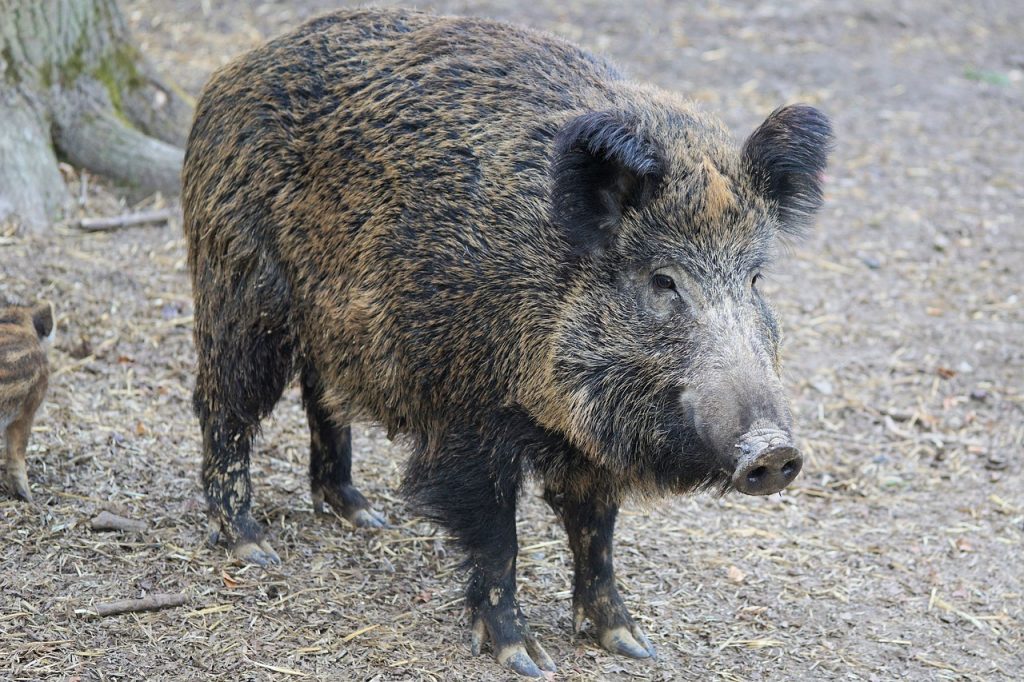Boars, otherwise known as “wild hogs”, are one of the most plentiful sources of game, but they are often overlooked by hunters who are used to hunting deer. Not only is boar hunting an exciting new experience in a whole other world of hunting, but they are also a great source of extra meat. With that in mind, we have gathered up advice from some of the top boar hunters in the country, and put it all together in this brief guide that will take you from the comfortable world of deer hunting into a new and exciting world of boar hunting.

Boar Hunting Is Not Deer Hunting
The first thing that you need to understand before you grab your gun and head off into the woods is that boar hunting and deer hunting are not the same thing. You need to change your strategies and equipment, or you will likely end up coming home empty handed (and hungry).
Boars and deer live in completely different areas. Boars prefer warm climates with thick vegetation. They are omnivores, and eat a variety of small animals and different vegetation, as opposed to deer who live on nuts, shrubs, clover, and fruit. Furthermore, while deer will only rut once per year and give birth to a couple of fawns, sows will go into heat two or more times per year, each time producing up to a dozen piglets per litter.
Deer and boar also have different senses, which is another reason the hunting strategies vary so much. Deer have an excellent sense of hearing, a good sense of smell and reasonably strong eyesight. Boar, on the other hand, do not see well, do not rely on sound much and have an extremely acute sense of smell, which is their primary means of detecting threats.
Boar Behavior
Boars are aggressive hunters, due to their meat-eating behaviors. While most boars are looking for small animals, such as rodents, they have been known to attack larger animals, including humans. Moreover, since sows spend a large part of the year in heat, boars are always rutting and they are even more aggressive as a result. Boars leave a very noticeable trail of destruction in whatever area they roam in. They use their tusks to turn over earth and roots in search of food, which leaves large areas looking like they were plowed. Boars are also surprisingly intelligent, and will be very cautious when approaching trap feeders. Even when feeding, boars are always alert to their surroundings, ready to fight or run at a moment’s notice.
Boar Hunting Laws
There exist substantial legal differences between boar hunting and deer hunting. Local state wildlife departments actively manage deer populations. Hunting licenses are often required, and the seasons for hunting are generally short. There are also usually very strict limitations on the number that can be killed and taken home by any one hunter. Boar hunting, on the other hand, features very minimal official management. Due to their high rates of reproduction and their negative impact on the environment, boars are most often classified as a pest. Some states will still require a hunting license, but most do not. The boar hunting season is year-round, and you can even hunt boars at night. Always check your local boar hunting laws before heading out to be sure you have everything right.
The Top Strategies for Bagging Your Boars
There are numerous strategies for boar hunting, but the three strategies that are used most often are spotting and stalking, hunting from a blind and using dogs to run them down. Unlike deer, you cannot still-hunt boar. The swamps and forests that they call home are usually too thick, which gives the boars lots of time to make their escape. While the dog pack strategy for hunting boar is very effective, the vast majority of hunters are not going to train and maintain a dog pack for boar hunting. So, it is best to focus on the strategies that will let the average hunter put some bacon on the table (and in the freezer).
When using a blind, it is best to use an elevated one. They do not need to be anything fancy, but definitely do a few shooting tests to make sure that you can place a precise bullet when the time comes. Set your stand up around 75 to 100 yards from the location of your feeder. You can get an effective feeder for as little as $40, but you can also get some high-end equipment for over $300. Remember that we told you how surprisingly smart boars are. This means that they will often learn to stop using certain feeders or approaching certain locations, so it is best to set up a few stands around different areas. Most top boar hunters spread them out and then visit them in a rotation, which means that no one spot becomes overused and useless. The best feed is just enough corn to entice them and keep them coming back for more. Leave the feeder near to a lot of foliage, but so the boar just should edge out into the open to feed.
Spot and stalk is the other successful strategy for boar hunting. This can either be done on foot or in a vehicle if the terrain is right. Use a glass to locate boars in popular areas starting about an hour before dawn, just as enough light comes out. You can drive or walk within about 200 yards of a boar without alerting it. Then it is just a matter of closing the last 100 or so yards until you find a good place to set up your shot with a clear shooting lane. You will quickly get a feel for the best places to find boar and the best approaches to make sure you have a clear line of sight from a good range that is not so close that you will spook the boar on approach.
